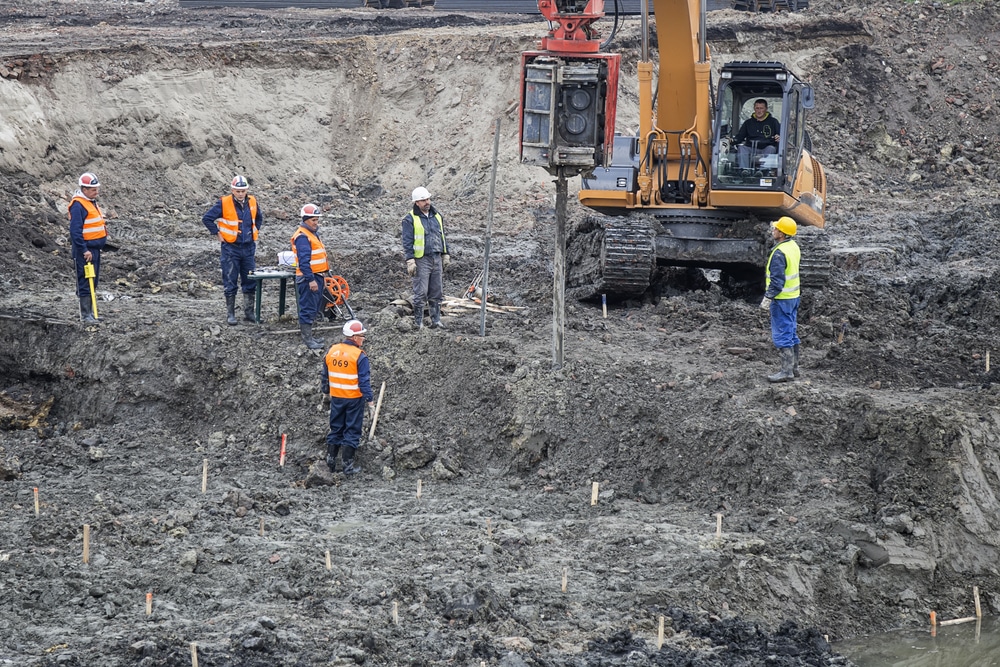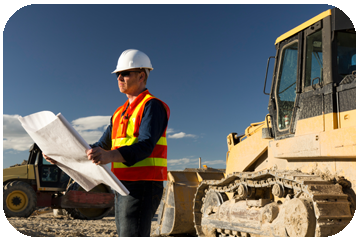Comprehending the Comprehensive Function of Geotechnical Engineers in Ground Investigation and Soil Evaluation for Building Projects
Geotechnical designers are essential to the success of building tasks, supplying vital understandings via detailed ground examinations and soil analysis. Their know-how in assessing soil actions and using sophisticated testing methods notifies vital decisions that support structural honesty and safety. By determining potential risks and collaborating with multidisciplinary groups, these specialists substantially influence project results, including effectiveness and cost-effectiveness. Nonetheless, the complexities of their role often prolong beyond these features, triggering a deeper expedition into the approaches they employ and the implications of their searchings for on overall project stability.
Role of Geotechnical Engineers
The crucial function of geotechnical designers in construction tasks can not be overstated, as they provide important insights into soil behavior and site conditions. These specialists are charged with analyzing the viability of the ground for different sorts of frameworks, making sure safety and security throughout the construction process. Their proficiency includes a variety of activities, consisting of website characterization, soil sampling, and laboratory screening, which are crucial for figuring out the mechanical and physical residential properties of the dirt.
Geotechnical engineers utilize their findings to create fundamental styles that fit load-bearing demands and reduce dangers connected to dirt slope, liquefaction, and negotiation security. They play an essential role in determining potential dangers, such as groundwater variations and contamination, which can substantially influence task practicality. Furthermore, they work together with architects, civil designers, and contractors to make sure that geotechnical factors to consider are integrated right into the general design and building and construction phases.
Ground Examination Strategies
Ground investigation methods create the foundation of geotechnical engineering, enabling engineers to obtain an extensive understanding of subsurface conditions. These techniques are important for examining soil residential properties, identifying groundwater levels, and identifying possible geological hazards.
Common methods consist of borehole boring, which enables the removal of soil examples at different depths, giving important data for evaluation. In addition, sitting screening techniques, such as Common Penetration Tests (SPT) and Cone Infiltration Examinations (CPT), are employed to evaluate soil toughness and density directly in the ground.
Geophysical approaches likewise play a substantial role in ground examinations. Techniques such as seismic surveys and electric resistivity tomography assistance assess subsurface attributes without extensive excavation. civil consulting engineers. These non-invasive approaches are particularly beneficial in big or sensitive locations where disturbance should be minimized
Moreover, exploratory trenches can be excavated to visually examine dirt layers and recognize any type of anomalies. Each of these methods adds distinct understandings, permitting geotechnical engineers to create exact site analyses and notify design decisions. In recap, a combination of these ground examination strategies is important for successful building and construction jobs, ensuring safety and security and architectural stability.
Soil Evaluation Techniques
Dirt analysis techniques are crucial for comprehending the chemical and physical residential properties of soil, which directly affect the style and building of structures and various other structures. Different methods are utilized to evaluate soil features, making sure that geotechnical designers obtain precise data for notified decision-making.
One generally utilized approach is grain dimension evaluation, which establishes the distribution of particle dimensions within a dirt sample. This is vital for identifying dirt kinds and predicting their behavior under tons. An additional important technique view it now is Atterberg limitations screening, which reviews the plasticity and moisture content of fine-grained soils, providing insights into their design residential or commercial properties.

Field tests, such as Conventional Infiltration Examinations (SPT) and Cone Penetration Tests (CPT), deal useful in-situ data pertaining to dirt stamina and stratification. Collectively, these soil evaluation techniques create the structure of geotechnical investigation, allowing designers to develop risk-free and efficient frameworks tailored to the certain conditions of the site.
Risk Reduction Techniques
Applying efficient risk reduction techniques is crucial for geotechnical designers to resolve possible obstacles in building tasks. These strategies are crucial in determining, assessing, and handling dangers associated with soil conditions, website security, and groundwater variations, which can detrimentally affect job outcomes.
One primary strategy involves conducting thorough site examinations that utilize innovative geophysical techniques and detailed dirt tasting. By getting precise information on subsurface problems, engineers can make educated decisions on layout and building approaches. In addition, using anticipating modeling devices permits the simulation of various situations, allowing engineers to visualize possible troubles and carry out safety nets.
Moreover, developing clear communication channels among job stakeholders fosters a joint approach to take the chance of management. Regular updates and appointments make certain that all events recognize the developing website conditions and can adapt their approaches as necessary.

Effect On Building And Construction Tasks
The effectiveness of risk mitigation strategies directly influences the general success of construction projects. Geotechnical designers play a critical function in this domain, as their knowledge in ground investigation and soil analysis notifies critical choices throughout the building process. By precisely examining dirt conditions and determining possible dangers, these specialists allow job teams to create effective options that more decrease dangers linked with ground instability, water infiltration, and other geotechnical challenges.
The impact of comprehensive geotechnical analysis is obvious in different facets of building and construction projects, consisting of price monitoring, task timelines, and architectural stability. Early recognition of issues enables for prompt treatments, minimizing pricey delays and spending plan overruns. A comprehensive understanding of website conditions enhances the design and engineering process, guaranteeing that frameworks are built to endure ecological pressures and potential all-natural disasters.
Eventually, the contributions of geotechnical engineers are important to the effective execution of building and construction projects. Their work not only promotes security and compliance with laws however additionally improves the long-term sustainability of frameworks, guaranteeing that they do effectively throughout their intended lifespan. The collaboration in between various other stakeholders and geotechnical groups is important for accomplishing optimum end results in building undertakings.
Conclusion
Finally, geotechnical engineers do an essential feature in construction projects via comprehensive ground investigations and dirt analyses. Their competence in evaluating dirt actions, using numerous examination techniques, and carrying out risk reduction methods substantially adds to the structural honesty and safety and security of constructed atmospheres. By teaming up with multidisciplinary groups, these professionals improve job effectiveness and guarantee compliance with security criteria, ultimately bring about effective building and construction outcomes and reduced prospective threats.
Geotechnical engineers are important to the success of construction projects, providing necessary insights via detailed ground investigations and soil evaluation.The pivotal duty of geotechnical engineers in building and construction jobs can not be overemphasized, as they give crucial understandings right into dirt behavior and website problems. Their know-how encompasses a vast variety of tasks, consisting of website characterization, soil sampling, and lab screening, which are vital for figuring out the physical and mechanical residential properties of the soil.
By properly assessing soil conditions and identifying prospective threats, these specialists enable project groups to design reliable solutions that minimize risks connected with ground instability, read this water seepage, and other geotechnical obstacles.
In conclusion, geotechnical engineers do an important feature in building and construction jobs with detailed ground investigations and soil analyses.